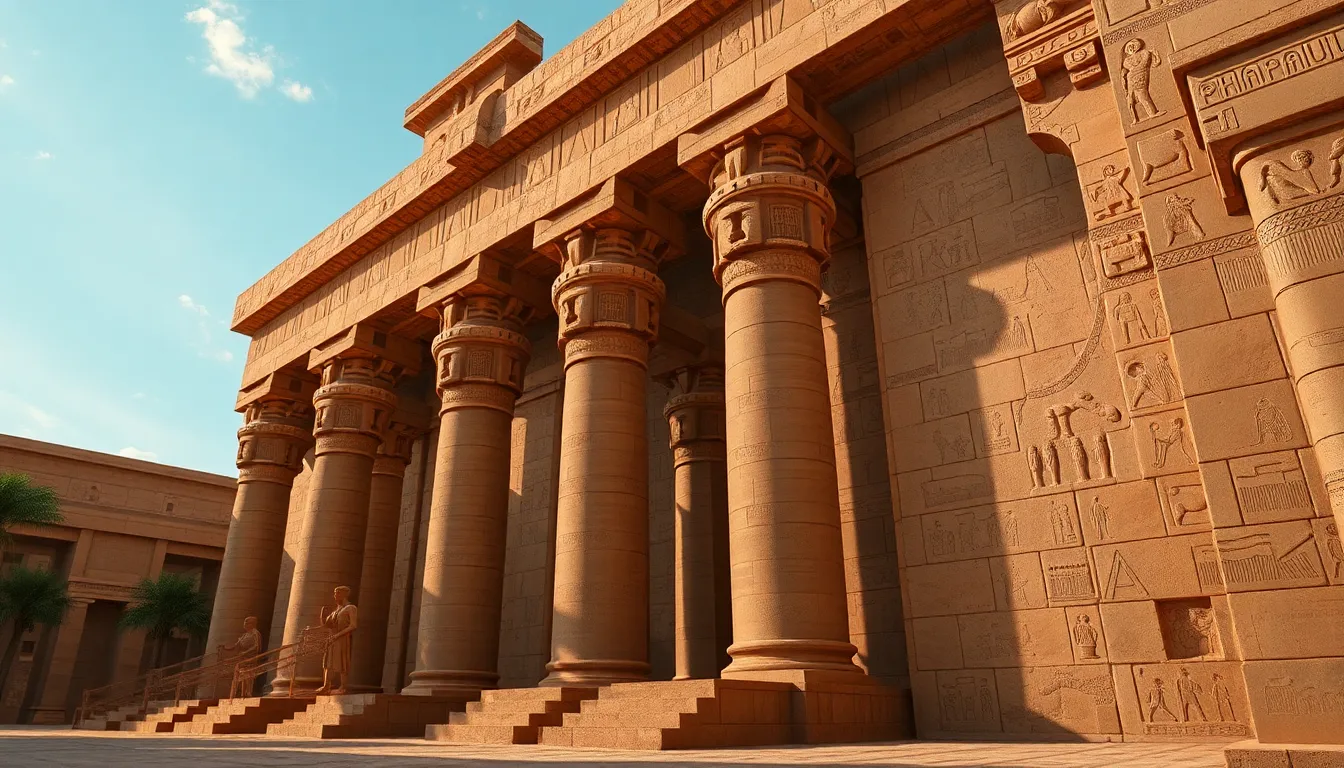The Architectural Marvels of the Temple of Khonsu: A Divine Connection
I. Introduction
The Temple of Khonsu, located within the grand Karnak Temple Complex in Luxor, Egypt, stands as a testament to ancient Egyptian ingenuity and spirituality. Dedicated to Khonsu, the moon god, this temple not only serves as a place of worship but also embodies the architectural brilliance of its time. The significance of the temple extends beyond its structural features; it holds a vital role in the religious practices of ancient Egyptians, symbolizing the connection between the divine and the earthly realm.
This article aims to explore the historical context, architectural design, construction techniques, artistic expressions, and modern-day significance of the Temple of Khonsu, shedding light on its enduring legacy in the realm of ancient Egyptian mythology and architecture.
II. Historical Context
The Temple of Khonsu was constructed during the 19th dynasty of the New Kingdom, around the 12th century BCE, a period marked by significant cultural and political advancements in ancient Egypt. This era saw the consolidation of power and the flourishing of art, religion, and architecture.
Khonsu, the god to whom the temple is dedicated, played a crucial role in Egyptian mythology as the deity of the moon and time. He was often associated with healing and protection, symbolizing the cyclical nature of time and the importance of the lunar calendar in agricultural practices.
Situated within the Karnak Temple Complex, the Temple of Khonsu is intricately linked to the worship of several deities and was part of a larger religious landscape that included temples dedicated to Amun and Mut, his parents. This complex served as a central hub for religious activities in ancient Thebes.
III. Architectural Design and Features
The Temple of Khonsu exhibits a sophisticated design that reflects the architectural prowess of ancient Egyptians. The layout is characterized by a series of courtyards, halls, and sanctuaries, culminating in the inner sanctum where the deity’s statue was housed.
- Columns: The temple features beautifully decorated columns, showcasing the lotus and papyrus designs that are emblematic of ancient Egyptian architecture.
- Reliefs and Inscriptions: The walls are adorned with intricate reliefs and hieroglyphics that narrate the myths and legends associated with Khonsu, providing insights into the religious beliefs of the time.
- Symbolism: The architectural elements are imbued with symbolism, such as the alignment of the temple with celestial bodies, reflecting the importance of astronomy in Egyptian culture.
IV. The Construction Techniques
The construction of the Temple of Khonsu involved traditional materials and methods that were characteristic of ancient Egyptian building practices. The primary materials used included:
- Limestone: Used extensively for the structure and decorative elements.
- Sandstone: Commonly utilized for reliefs and inscriptions.
Ancient builders employed a variety of tools such as chisels, hammers, and wooden sledges to transport heavy stones. They utilized ramps and levers to position massive blocks, demonstrating their understanding of engineering principles.
Despite the advanced techniques, challenges such as the logistics of transporting materials from quarries and the need to align the temple accurately with celestial phenomena were significant. Builders overcame these hurdles through meticulous planning and community cooperation.
V. Artistic Expressions within the Temple
The Temple of Khonsu is adorned with a wealth of artistic expressions that depict the mythology surrounding Khonsu and other deities. The iconography includes:
- Depictions of Khonsu: Often shown as a young man with a sidelock of youth and a lunar disk on his head, symbolizing his association with the moon.
- Reliefs depicting rituals: These artworks illustrate various religious ceremonies, emphasizing the temple’s role as a center for worship.
The art within the temple is not merely decorative; it serves a functional role in religious practices, reinforcing the connection between the divine and the worshippers. Remarkably, many of these artistic details have been preserved over millennia, allowing us to glimpse the creativity and spirituality of ancient Egyptian society.
VI. Ritual Practices and Religious Significance
The Temple of Khonsu was a vibrant center for ritual practices dedicated to the moon god. Various ceremonies were performed, including:
- Daily Offerings: Priests would present offerings of food, incense, and libations to the god.
- Festivals: Special festivals celebrating Khonsu’s role in the lunar cycle drew large crowds, reinforcing community ties and religious devotion.
The temple’s architecture was intrinsically tied to these spiritual practices. The layout facilitated the movement of priests and worshippers, enhancing the overall experience of devotion and connection to the divine.
VII. Modern-Day Significance and Preservation Efforts
Today, the Temple of Khonsu is recognized as a UNESCO World Heritage site, reflecting its importance not only to Egypt but to the world. Preservation efforts are ongoing, aimed at protecting the temple from environmental damage and the effects of tourism.
Current challenges include:
- Environmental Factors: Erosion and the impact of modern pollution threaten the integrity of the structure.
- Tourism Pressure: While tourism is crucial for the local economy, it can lead to wear and damage of delicate features.
Despite these challenges, the Temple of Khonsu remains a vital component of contemporary Egyptian identity, attracting visitors from around the globe and serving as a source of national pride.
VIII. Conclusion
The Temple of Khonsu stands as a remarkable example of ancient Egyptian architecture and religious life. Its intricate design, historical significance, and artistic expressions make it a crucial part of our understanding of ancient Egyptian culture.
As we reflect on the enduring legacy of the Temple of Khonsu, it becomes clear that this architectural marvel is not just a remnant of the past but a living testament to human creativity and spirituality. We encourage further exploration and study of ancient Egyptian architecture, as it continues to offer insights into the civilization that shaped much of our world today.




